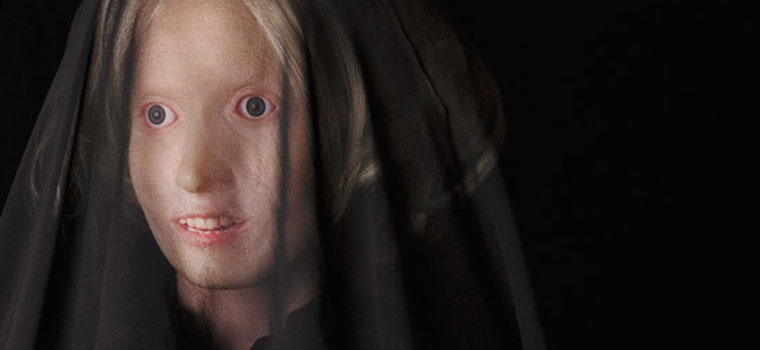
thea costantino
"Daughters of the Empire is a body of sculptural and photographic work that explores the role of women of the British Empire in Australia and further afield. The title is borrowed from the Imperial Order of the Daughters of the Empire (IODE), a Canadian organisation formed in 1900 to promote British patriotism, support the Boer war effort and serve the empire. This exhibition examines the complex 'feminine' imperialism of women of the British Empire as a marginal group within an otherwise privileged elite in the nineteenth and early twentieth centuries, when colonial expansion had reached its peak and the drive for decolonisation took on increasing urgency in the lands that the British invaded.
Ambivalent figures such as Daisy Bates, self-proclaimed 'grandmother' (Kabbarli) of the Indigenous peoples of Western Australia, are depicted as wax sculptures referencing antiquated museum dioramas and disreputable historical tourism such as Madame Tussauds. Julia Margaret Cameron, an early photographic artist associated with the Pre-Raphaelites, nostalgia for medieval England, the abolition movement and the push for women's emancipation, was born in British India, the daughter of a colonial official, and relocated to England in her adult years before finally settling on a coffee plantation in Ceylon. In this series she is depicted incongruously with the Australian flower Geraldton wax, alluding to her contradictory position within nineteenth century culture and referencing the artist's formative years in the mid-west wheat belt. Other figures such as the naturalist Helena Scott and Mrs Dance, the woman selected to make the first cut in a tree felled to mark the founding of the Swan River Colony (Perth) in 1829, are also depicted.
The exhibition also examines themes such as the role of women's reproductive abilities in building post-Federation Australia, in which the cry of 'populate or perish' corresponded with the goals of the Immigration Restriction Act (a.k.a. the White Australia Policy). Several images reference the claustrophobic interiors of Victorian drawing rooms; the ornamental elements within the composition cite colonial aesthetics, in which the exotic is desired and the familiar is forcibly imposed. Through such devices the series alludes to a repressed narrative of colonial violence which haunts the official history of the British Empire."
Thea Costantino
2014
- TURNER GALLERIES | showcasing contemporary art
at 470 WILLIAM STREET NORTHBRIDGE WESTERN AUSTRALIA 6003 - TURNER GALLERIES HAS NOW CLOSED.
This website is an archived record of the exhibitions and artwork shown at the gallery. - Turner Galleries acknowledges the Whadjuk Nyoongar people as the Traditional Owners of the lands and waters where Turner Galleries is situated, and pay our respect to Elders past, present and emerging.
- Website © 2000-2024 TURNER GALLERIES. All images are © the artists and are not to be used without permission.
- This is a millapede project.